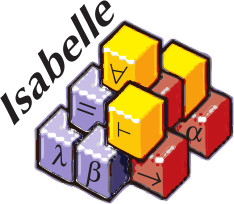Commits
These conventions are adapted from the Lean prover commit conventions.
General Rules
- Every commit must be small and self-contained. If you have made a lot of changes/additions, split them into modular, smaller changesets. This makes it easier for you and other contributors to merge changes and understand the development process.
- Every commit must compile. If possible, install a continous integration process for your project and integrate this check.
- Adhere to the commit message format explained below.
Format of The Commit Message
<type>(<scope>) <subject>
<NEWLINE>
<body>
<NEWLINE>
<footer>
<type> is:
- feat (feature)
- fix (bug fix)
- doc (documentation)
- style (formatting, missing semicolons, …)
- refactor
- test (when adding missing tests)
- chore (maintain, ex: travis-ci)
- perf (performance improvement, optimization, …)
<scope> is a name of theory or a directory which contains changed files. For instance,
it could be
- continued_fractions/Convergents
- continued_fractions/
- Groups
<subject> has the following constraints:
- Use imperative, present tense: “change” not “changed” nor “changes”
- Do not capitalize the first letter
- No dot(.) at the end
<body> has the following constraints:
- Just as in
<subject>, use imperative, present tense - Includes motivation for the change and contrasts with previous behavior
<footer> is required in either of the following two situations:
- Breaking changes: All breaking changes have to be mentioned in footer with the description of the change, justification and migration notes
-
Referencing issues: Closed bugs should be listed on a separate line in the footer prefixed with “Closes” keyword like this:
Closes #123, #456
Example
fix(continued_fractions): update assumption from convergency theorem
The convergency theorem does not require a field instance but more generally works
on any integral domain.
Closes #1337
